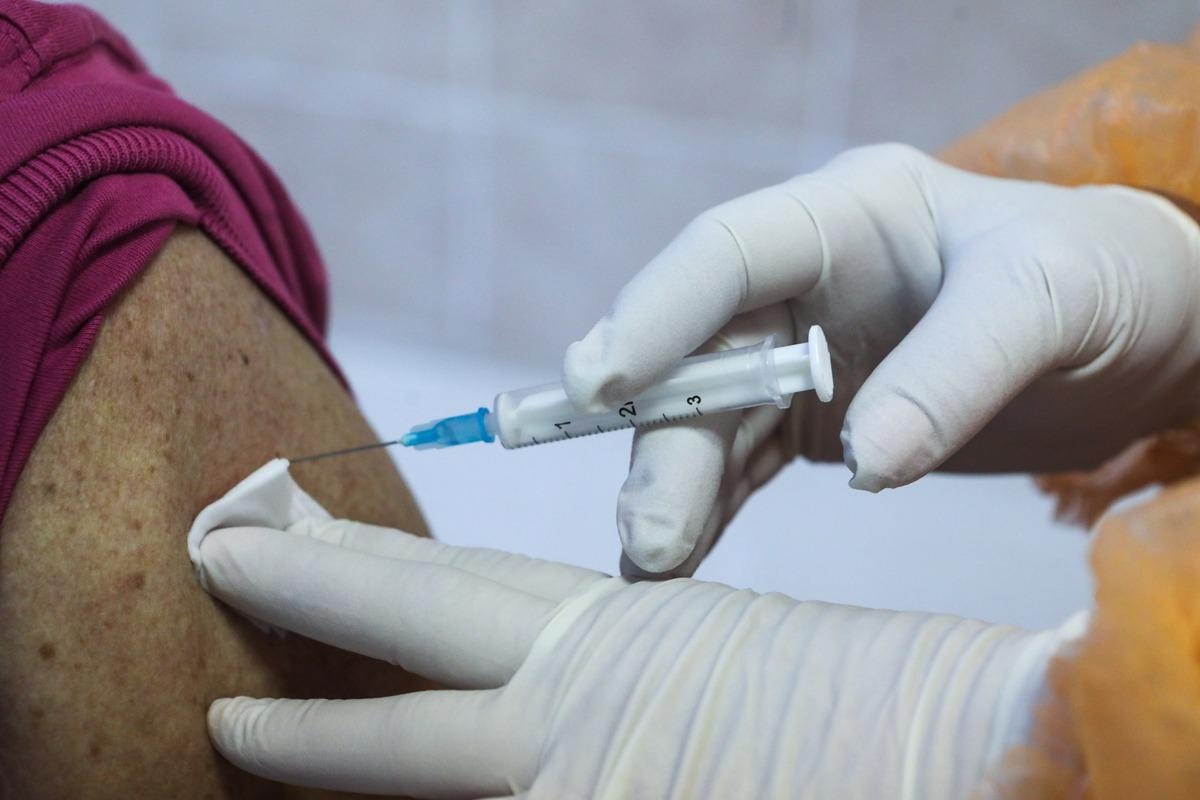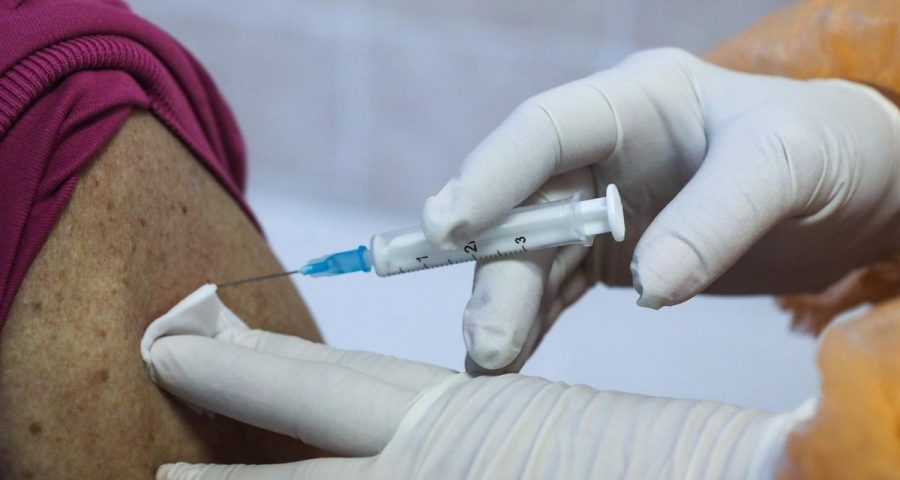In a recent study posted to the medRxiv* pre-print server, a team of researchers conducted a case-control study at a mass vaccination center in Japan to evaluate acute and long-term adverse events following immunization (AEFI) with coronavirus disease 2019 (COVID-19) Moderna vaccine.
 Study: Incidence and Risk Factors of Immediate Hypersensitivity Reactions and Immunisation Stress-related Responses with COVID-19 mRNA Vaccine. Image Credit: Pimen/Shutterstock
Study: Incidence and Risk Factors of Immediate Hypersensitivity Reactions and Immunisation Stress-related Responses with COVID-19 mRNA Vaccine. Image Credit: Pimen/Shutterstock
Global mass vaccination campaigns organized to combat COVID-19 widely use the Pfizer-BioNTech and Moderna mRNA vaccines as they provided a high level of immune protection.
Although previous studies have evaluated anaphylaxis or vasovagal syncope as indicators of vaccine safety, the scientific community emphasizes a more comprehensive safety evaluation of the mRNA vaccines, including AEFI. Of all the five categories of AEFI, investigation of immediate hypersensitivity reactions (IHSR) and immunization stress-related responses (ISRR) are particularly important as they occur immediately after the injection, and some people are especially at high risk of developing them.
About the study
In the present study, researchers conducted active surveillance of AEFI at a mass vaccination center in Japan, where 1,201,688 individuals received the Moderna vaccine between May 24 and September 24, 2021.
While vaccine recipients who developed IHSR and ISRR were designated as Case 1 and Case 2, respectively, those who did not have any AEFI were controls. The ratio of controls and cases was 1:4.
The study participants filled a pre-vaccination screening questionnaire for the COVID-19 vaccine to gather information about their baseline clinical characteristics, such as age, sex, comorbidities of diabetes, hypertension, etc., and history of allergic episodes for drugs and foods.
During the study period, all relevant clinical findings of the vaccine recipients with an AEFI, such as the symptoms, signs, medication received, and the timing of onset of symptoms after the injection were collected via medical records maintained in the first-aid rooms.
Findings
There were 3,014 incidences of AEFI in 2,913 Moderna vaccine recipients, of which 101 recipients showed AEFI twice, first at the time of receiving the first dose and next on receiving the second vaccine dose. Except for anaphylaxis, the incidence rate of AEFI at the first dose was significantly higher than at the time of the second dose.
Among the 1,201,688 vaccine recipients, the incidence rate of IHSR was 266, ISRR was 2129, anaphylaxis was two, and vasovagal syncope was 72. Among the 611,238 vaccine recipients without AEFI, 1,208 recipients were selected as matched controls 1 for Cases 1 and 9,940 recipients as control 2 for Cases 2.
The vaccine recipients with ISRR were significantly younger than their controls, but no such difference was observed in the IHSR group. The proportion of females was significantly higher in recipients with both IHSR and ISRR than in their respective controls.
An increased risk of IHSR was associated with female gender, asthma, atopic dermatitis, thyroid diseases, and history of allergy to drugs and foods, which had the strongest association for an increased risk of IHSR. Similarly, younger vaccinees (under 65 years) were at a greater risk of developing ISRR. An increased risk of ISSR was also associated with female gender, asthma, mental disorders, history of allergy to drugs and foods, and history of vasovagal reflex.
Changing the case definitions of IHSR and ISRR did not alter the study findings. The association of atopic dermatitis for an increased risk of IHSR did not reach statistical significance as per the new case definition. The risk factors for IHSR and ISRR were found to be consistent in sensitivity analysis performed during the study, even when using narrowed case definitions, except for atopic dermatitis for IHSR.
Conclusions
Although the overall incidence of AEFI was low at both first and second doses of the Moderna vaccine, the incidence rates of both IHSR and ISRR were significantly higher after the first dose than after the second one. Over 80% of AEFI incidences were ISRR, and the incidence rate of IHSR was low, with only ~266 cases per 240 million doses among vaccine recipients, at both first and second doses, which is different from the estimated incidence rates reported previously.
Consistent with the existing data reports for the US and UK, the anaphylaxis rate was also extremely low, at 2 cases per million doses. Only the female gender and history of allergy were associated with an increased risk of anaphylaxis to mRNA vaccines.
The researchers identified several risk factors associated with the development of IHSR and ISRR, including comorbidities such as asthma, atopic dermatitis, and thyroid diseases. The vaccine recipients with these comorbidities, including thyroid disorders, were predisposed to develop IHSR in response tomRNA vaccines, although their response may not be specific to mRNA vaccine components such as PEG-2000. People with thyroid disorders have a higher PEG-sensitisation rate than the general population.
In addition, ISRR-related clinical symptoms and signs, especially neurological symptoms, were difficult to assess in the setting of mass vaccination. However, one-third of recipients showed neurological symptoms, such as functional neurological disorders (FNDs), although active surveillance and careful evaluations are needed for a more accurate diagnosis and taking appropriate mitigating measures at mass vaccination centers.
To summarize, the risk factors identified in the present study could help stratify mRNA vaccine recipients at high risk of developing IHSR and ISRR and help healthcare providers take appropriate measures to prevent and respond adequately to their development in time.
*Important notice
medRxiv publishes preliminary scientific reports that are not peer-reviewed and, therefore, should not be regarded as conclusive, guide clinical practice/health-related behavior, or treated as established information.
- Kazuo Imai, et al. (2022). Incidence and Risk Factors of Immediate Hypersensitivity Reactions and Immunisation Stress-related Responses with COVID-19 mRNA Vaccine. medRxiv. doi: https://doi.org/10.1101/2022.01.12.22269134 https://www.medrxiv.org/content/10.1101/2022.01.12.22269134v1
Posted in: Medical Science News | Medical Research News | Disease/Infection News
Tags: Allergy, Anaphylaxis, Asthma, Atopic Dermatitis, Coronavirus, Coronavirus Disease COVID-19, covid-19, Dermatitis, Diabetes, Drugs, Healthcare, Hypersensitivity, Immunization, Stress, Thyroid, Vaccine

Written by
Neha Mathur
Neha Mathur has a Master’s degree in Biotechnology and extensive experience in digital marketing. She is passionate about reading and music. When she is not working, Neha likes to cook and travel.
Source: Read Full Article
